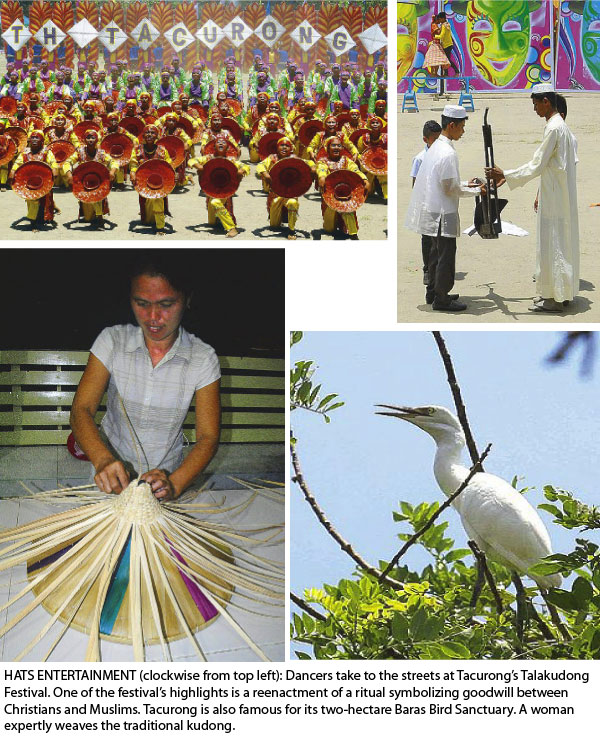Hats off to the Talakudong
MANILA, Philippines - Long before street dance festivals became a craze, the rustic municipality of Tacurong in southern Mindanao was already painting the town red with their colorful brand of merry-making way back in 1976.
This commercial crossroads town in Sultan Kudarat province pioneered Mindanao’s celebration of cultural diversity with the Talakudong Festival, which celebrates its humble beginnings as a major producer of headgear made out of indigenous plant materials.
Talakudong, a Maguindanao word for the native salakot, the headgear woven out of pandan leaves worn by its early settlers, is believed to be the town’s old name when it was still a village of Buluan of the then Empire Province of Cotabato.
In most parts of Mindanao, the headgear became a signature product worn in the farms and the coastal areas by lumad tribal peoples, Maguindanaoans and Ilonggo settlers, making it a symbol of unity among the various groups who lived and worked together.
So when the town of Tacurong thought of coming up with a festival in 1995 to celebrate its colorful and dynamic culture, it could be no other than an occasion that pays tribute to and literally takes its hat off to its trademark headgear.
It eventually became a full-blown festival with street dancers garbed in fabulous regalia reflecting the town’s storied past, joining the league of Mindanao’s popular fests such as Davao’s Kadayawan Festival.
That decades-old jovial spirit came to life once more with the Talakudong Festival to celebrate Tacurong’s 14th cityhood anniversary recently.
The week-long festivity kicked off with the Headgear Parade that wove its way around the city, putting on display the colorfully-painted and jazzed up talakudong. Sometimes dyed to represent their tribal influences, the talakudong has also become a popular decoration motif and accent featured in homes and establishments both here and abroad.
Tacurong City Mayor Lina Montilla said the festivity aims to preserve the tradition of hat-weaving and take the product to a new level.
She said that the event stresses goodwill and harmonious living among the tri-people of Tacurong – Muslim, Christian and lumad or indigenous people – despite their diverse ethno-linguistic and religious backgrounds.
Montilla added that the festival also highlights the economic progress the city has achieved over the years, as it has become a vibrant investment, agro-industrial and commercial center in Region 12 due to its strategic location.
The highlight of the celebration was the Charter Day, which featured the street dancing competition and field demonstration of contingents rendering stylized lumad and Muslim dances showcasing the indigenous headgear.
The focal point of the dance is the reinactment of the ritual when the town mayors of Tacurong and Buluan, Maguindanao forged a partnership, with the talakudong taking center stage as a sign of goodwill between Christian and Muslim villagers.
Traditionally made of pandan leaves, new varieties of the kudong use other indigenous plant materials to make the hats more durable and elegant. In stores around Tacurong, the talakudong can be bought at very affordable prices, while these are understandably more expensive elsewhere.
Aside from the Talakudong Festival, Tacurong as a tourist destination is one of Mindanao’s bird-watching capitals.
The main draw for bird-watchers is the two-hectare Baras Bird Sanctuary which has some 20,000 black crowned herons and five sub-species of egrets, one of the highest concentration of fowls in the country.
A former black pepper plantation, the sanctuary also hosts thousands of migratory birds from the northern hemisphere escaping the winter season.
It lures an average of 6,000 visitors a year, making it one of the top tourist magnets of southern Mindanao.
With almost four decades of dancing in the streets and weaving the distinctive headgear, it is about time we take our hats off to the talakudong.
- Latest
- Trending















